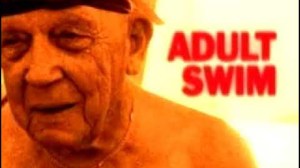The second episode of CBS All Access‘ The Stand limited series debuts on the streaming platform on Thursday, December 24th and if the series premiere episode is any indicator, many Stephen King fans will notice some differences between the master of horror’s novel and this latest, live-action telling of the dystopian tale which sees a showdown between good and evil among the survivors of a horrific global pandemic. But while any adaptation prompts comparison between the printed page and its big or small screen offspring, when it comes to The Stand there isn’t a direct path or even just one set volume to compare to. King’s novel is a unique and somewhat complicated entity itself, one that has seen more than one iteration since its initial publication in 1978 — as well as a couple of other adaptations as well. So, ahead of Thursday night’s episode, “Pocket Savior”, here’s a breakdown of the various versions of what is arguably King’s greatest masterpiece.
Videos by ComicBook.com
Elements of what would become The Stand appeared well before the novel was first published in 1978, specifically the catastrophic pandemic that ends up being the catalyst for the events of The Stand. Published in 1969, the short story “Night Surf” sees most of humanity wiped out by a virus called A6 or Captain Trips. This story follows a group of former college students who have survived a previous virus, A2, that supposedly makes them immune to A6. There are some differences between this story and The Stand — the previous virus, the way Captain Trips is portrayed in terms of being an ongoing pandemic — but the short story sets the stage in a sense for The Stand as most fans know it.
The Stand as many know it was thus first published in hardcover in October 1978 and even then it was a substantial book at 832 pages. In the original edition, the story’s events were set in 1980. When the book was released in paperback in 1980, the first “adjustment” to the story emerged with the setting date shifted to 1985. There would be another setting date shift moving the story to 1990 in a new version of the book published in, incidentally, May 1990 but that edition saw even more major changes to the story. This new version of the book was billed as The Complete and Uncut Edition and restored around 400 pages from King’s original manuscript that he had removed on publisher request to make it more financially viable in 1978, pushing the novel to a massive 1152 pages.
The Complete and Uncut Edition of The Stand keeps the core story the same but does contain some significant differences. The uncut version contains a completely different opening “chapter”, some of the later chapters are longer, and there’s an entire series of “vignettes” which explore the fates of other random Captain Trips survivors, the ones who died by other means such as a woman happy her family had died only to end up dying when she accidentally gets locked in a freezer and a little girl who survived the flu only to die of a broken leg. Trashcan Man’s journey is longer un the uncut version and there’s the addition of a terrifying character called The Kid. The pop culture references are also updated in the book because of the shift in setting.
The Complete and Uncut Edition of The Stand is the version of the book that most fans have likely read — it’s the version most readily available in bookstores — but it may not be the version of the story fans are most familiar with and that’s where the 1994 miniseries comes in. Originally conceived of as a theatrical film before eventually being developed as a television miniseries, a four-episode version of The Stand debuted on ABC on May 8, 1994. The miniseries was based upon the 1978 version of the novel, though did open the same way the 1990 uncut version does — with the accidental release of Captain Trips from a top-secret government laboratory in California and Army soldier Charlie Campion’s escape with his family, thus sparking the spread of the virus.
The miniseries was popular with audiences and well-received by critics as well and remains, for many, the go-to version of the story. There has also been one other adaptation of the story, this time in comic-book form. Between 2008 and 2012, Marvel Comics adapted The Stand with the story written by Riverdale showrunner Roberto Aguirre-Sacasa with art by Mike Perkins. King himself has adapted elements from The Stand for other novels as well, particularly Randall Flagg who shows up in different iterations in King’s Dark Tower series.
All of that leads to CBS All Access’ adaptation. This latest version is based on The Complete and Uncut Edition of The Stand but does also have its differences. Some of the characters have been gender bent — specifically, Rat Man becomes Rat Woman and Ralph Brentner becomes Ray Brentner — and The Kid doesn’t feature in the series either. It will also offer fans something else entirely by way of the ending. The ninth episode of the limited series is a “coda” written by King himself that will give Frannie Goldsmith (played in the series by Odessa Young) her own “stand” at the end of the story — something she didn’t really get in the original version of the tale.
“The coda, I’m excited for you to see it. I think it really adds to it,” executive producer Benjamin Cavell explained. “But the thing that he was kicking himself about, and the question that this will answer, in his mind, is, ‘Well, when does Frannie get her stand?’ As we know, she is, what, eight months pregnant; when they leave on the stand, she can’t go. But it was always, in King’s mind, a deficit of the book that one of its main heroes doesn’t kind of get to participate in its climax. So, without giving anything away about the coda, I will say that the thing that I think generated it or generated the need for it, at least in his mind, was that Frannie needed to have a stand of her own.”
The first episode of The Stand, “The End”, is now streaming on CBS All Access. New episodes arrive every Thursday. The second episode, “Pocket Savior”, debuts December 24th.








